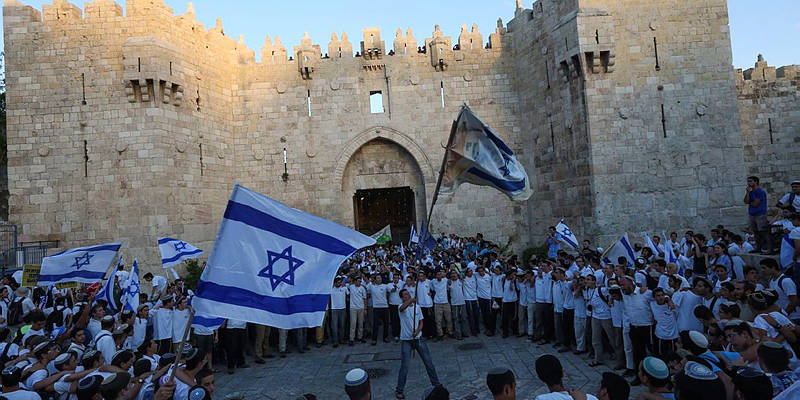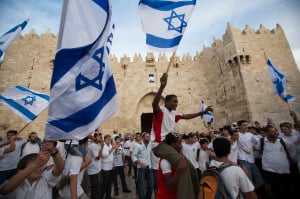On May 12, 1968, the government proclaimed a new holiday—Jerusalem Day—to be celebrated on the 28th of Iyar, the Hebrew date on which the divided city of Jerusalem was reunited.
By: Rabbi Ari Enkin, Rabbinic Director, United with Israel
Under the 1947 UN Partition Plan, which proposed the establishment of two states in the British Mandate of Palestine—a Jewish state and an Arab state—Jerusalem was to be an international city. The plan was for it to be neither an exclusively Arab nor a Jewish city for a period of 10 years, at which point a referendum would be held by Jerusalem residents to determine the status. The Jewish leadership accepted the proposal, including the internationalization of Jerusalem, but the Arabs rejected it.
As soon as Israel declared its independence in 1948, the new Jewish state was attacked by its Arab neighbors. Jordan took over the eastern half of Jerusalem, including the Old City. Israeli forces made a concerted attempt to dislodge them, but were unable to do so. By the end of the 1948 War of Independence, Jerusalem was left a divided city, shared by Israel and Jordan.
The Old City and eastern Jerusalem continued to be occupied by Jordan for the next 19 years, and the Jewish residents were forced out. Under Jordanian rule, half of the Old City’s 58 synagogues were demolished, and the Jewish cemetery on the Mount of Olives was plundered for its tombstones, which were used as paving stones and building materials.
This state of affairs changed in 1967 as a result of the Six Day War. Before the start of the war, Israel sent a message to King Hussein of Jordan saying that Israel would not attack Jerusalem or Judea and Samaria (the “West Bank”) as long as the Jordanian front remained quiet. However, urged by Egyptian pressure and based on deceptive intelligence reports, Jordan began shelling civilian locations in Israel, to which Israel responded on June 6 by opening the eastern front. The following day, June 7, 1967 (28 Iyar 5727), Israel liberated the Old City of Jerusalem. Later that day, then-Defense Minister Moshe Dayan declared what is often quoted on Jerusalem Day (Yom Yerushalayim):
“This morning, the Israel Defense Forces liberated Jerusalem. We have united Jerusalem, the divided capital of Israel. We have returned to the holiest of our holy places, never to part from it again. To our Arab neighbors we extend, also at this hour—and with added emphasis at this hour—our hand in peace. And to our Christian and Muslim fellow citizens, we solemnly promise full religious freedom and rights. We did not come to Jerusalem for the sake of other peoples’ holy places, and not to interfere with the adherents of other faiths, but in order to safeguard its entirety and to live there together with others, in unity.”
On May 12, 1968, the government proclaimed a new holiday—Jerusalem Day—to be celebrated on the 28th of Iyar, the Hebrew date on which the divided city of Jerusalem was reunited. It was not until March 23, 1998, that the Knesset passed the Jerusalem Day Law, making it a national holiday.
Sign the Declaration to Keep Jerusalem United
Jerusalem Must Remain the United Capital of Israel
I declare that Jerusalem is the eternal capital of the Jewish People and support all efforts to maintain and strengthen a united Jerusalem as the undivided capital of the State of Israel.

